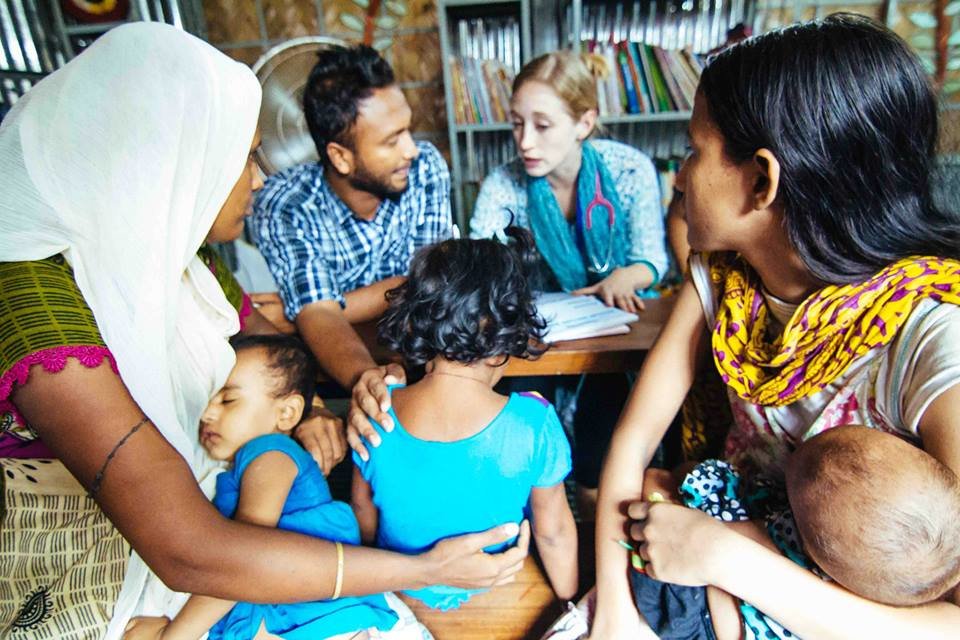When Jennifer Farrell, a Tulane University medical student working the trauma wards in Bangladeshi government hospitals, began tracking her patients’ outcomes, she found an odd thing. Her mortality rate was zero percent—in a country where road accident fatalities outpace those in the United States and United Kingdom at a rate as high as 160 to 1.
Though the triple-degreed Fulbright Scholar is something of a wunderkind, the survival rate of Farrell’s patients had less to do with her skills and more to do with the reality that those with the worst injuries weren’t even making it to the hospital. She saw patients with broken bones and minor injuries, but not the severe head and chest trauma she was accustomed to treating.
“We just don’t know where these patients are,” Farrell says of the more seriously injured. “We don’t see those patients. They are invisible in the data right now.”
Farrell learned that in Bangladesh, most doctors and medical students aren’t trained in emergency medicine. Other hospitals shuttle the most injured off to a handful of government-run hospitals that do have trauma units. “Every delay is a potential life lost, because time is so, so important in emergency medicine,” Farrell says. Patients—bleeding, broken, dying—are commonly treated like proverbial hot potatoes, and often time runs out.
Based on research she conducted at those government-run hospitals, Farrell estimates that about 90 percent of the injured who do make it to the hospital arrive via CNG—compressed natural gas vehicles, or auto rickshaws as they are known in India. Ambulances are a private service, without “trained people or medical equipment in them the majority of the time,” Farrell notes. “People book ambulances when we have strikes, for example, because it’s the safest way to get around the city when the roads are closed.”
Through the thousands of first responders she helped train, Farrell learned that unless family or another vocal advocate is present at the time of the accident, the injured lay in the street until someone does arrive. But Farrell says she’s found that people respond if someone is there to shout “if this was your sister, your brother, your mother, your child, wouldn’t you want someone to drive them to the hospital?” Otherwise, bystanders don’t know what to do. “People want to help,” says Farrell. “Anytime you say, ‘give me your scarf, give me your shirt, stop the police, stop that CNG’—as soon as you tell people what to do, they do it.”
There are nearly 15 million people living in Dhaka, Bangladesh’s capital. A massive migration has increased the city’s population nearly four-fold over the last 25 years, leading it to be named the world’s densest metropolitan area. Vehicles clog the roads. Seat belt and helmet laws go unenforced. Farrell cites a Bangladesh University of Engineering and Technology study that estimates 85 percent of road crash victims in Bangladesh die before they reach a hospital.
But Bangladesh has a few factors in its favor. First, cell phone coverage is pervasive and as Farrell puts it, dirt-cheap. In April, there were more than 115 million mobile phone subscriptions in a country with a 156.6 million people.

Working with telecom company Miaki VAS, Farrell has developed a pilot cell phone app, CriticaLink, and also an easy-to-remember phone number, 09678787878. Calls will be dispatched through a call center or app users can send pictures and submit geo-tagged information. As accidents are reported, 100 trained first responders in four test neighborhoods will receive a ding and pop-up notification on their phones. It will work like a ride-sharing app, but instead of calling a car, people should get emergency help within a few minutes. The volunteer first responders are trained in skills like triaging, moving patients, and offering CPR and burn care. They also learn to engage the large crowds of bystanders that often gather at an accident, having them call the police or flag down a CNG to take the injured to a hospital.
“Half of my team leaders, they’ve lost parents and siblings in accidents, and they are very passionate about this cause … there’s something that’s driving them,” says Farrell.
CriticaLink went live with a soft launch this month, with hopes to eventually acquire funding for 10 stocked ambulances and professional paramedics. Farrell noted that when she herself was in a small accident, about a hundred people gathered around her, pulled out their phones and, in keeping with Bangladesh’s social media-mad customs, posted photos to Facebook. “You don’t need a hundred people in the crowd taking a picture and sending it to our app service,” she adds, demonstrating the app’s simplicity, “all you need is one.”
Photos courtesy of Criticalink
Source:Magazine.good.is










